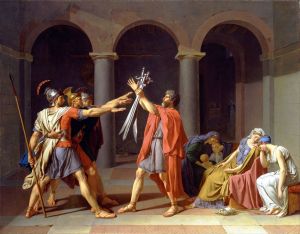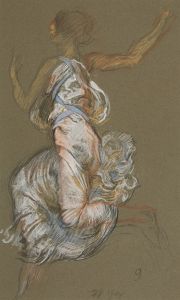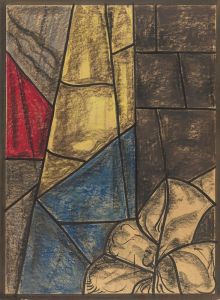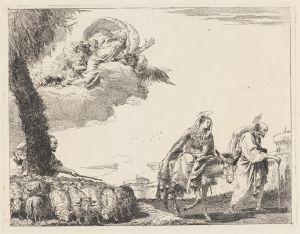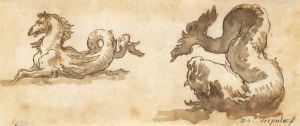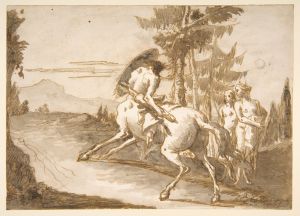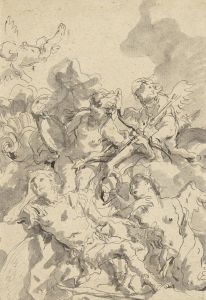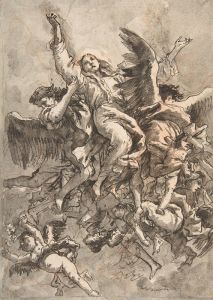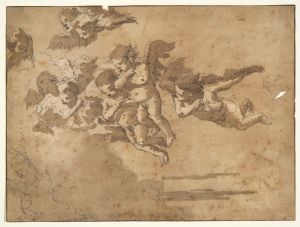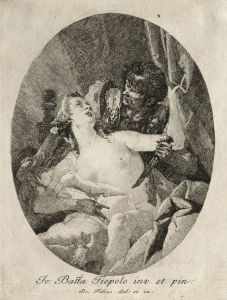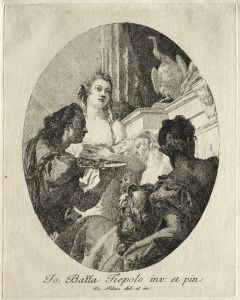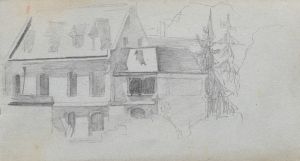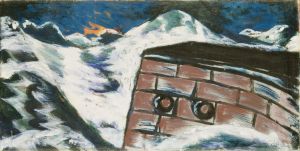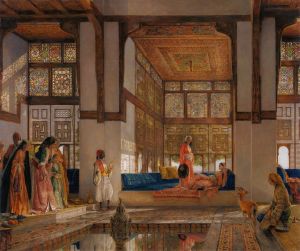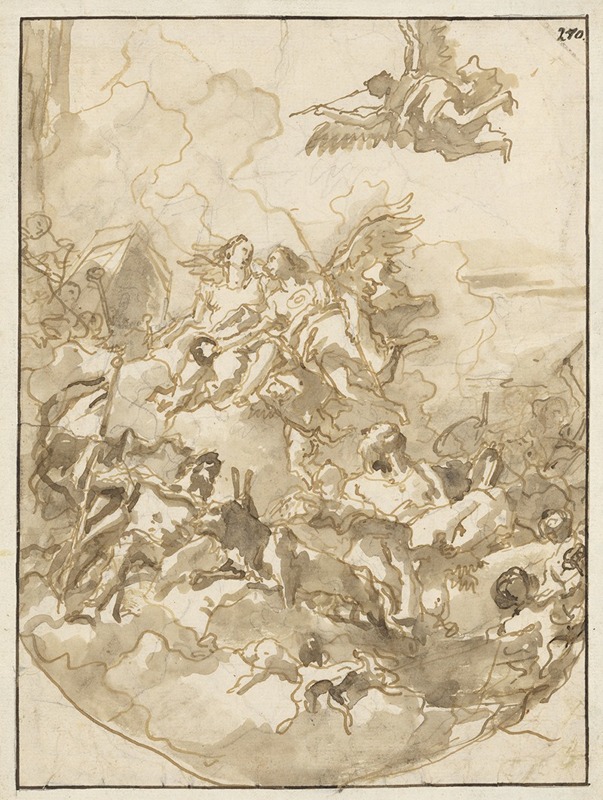
Sketch for a Ceiling with an Allegory of Fortitude and Wisdom
A hand-painted replica of Giovanni Domenico Tiepolo’s masterpiece Sketch for a Ceiling with an Allegory of Fortitude and Wisdom, meticulously crafted by professional artists to capture the true essence of the original. Each piece is created with museum-quality canvas and rare mineral pigments, carefully painted by experienced artists with delicate brushstrokes and rich, layered colors to perfectly recreate the texture of the original artwork. Unlike machine-printed reproductions, this hand-painted version brings the painting to life, infused with the artist’s emotions and skill in every stroke. Whether for personal collection or home decoration, it instantly elevates the artistic atmosphere of any space.
Giovanni Domenico Tiepolo, an Italian painter and printmaker, is known for his contributions to the Rococo movement, following in the footsteps of his father, the renowned artist Giovanni Battista Tiepolo. One of his notable works is the "Sketch for a Ceiling with an Allegory of Fortitude and Wisdom." This artwork exemplifies Domenico's skill in creating allegorical compositions, a common theme in the art of the 18th century.
The sketch is a preparatory work, likely intended for a larger ceiling fresco, a medium in which both Domenico and his father excelled. Ceiling paintings were a popular form of decoration in the grand palaces and churches of Europe during this period, often depicting allegorical or mythological scenes that conveyed moral or philosophical messages. The use of allegory allowed artists to imbue their work with deeper meanings, often reflecting the values and ideals of the Enlightenment.
In "Sketch for a Ceiling with an Allegory of Fortitude and Wisdom," Tiepolo employs personification to represent the abstract concepts of fortitude and wisdom. Fortitude is typically depicted as a strong, resilient figure, often accompanied by symbols such as a lion or a column, representing strength and endurance. Wisdom, on the other hand, might be portrayed as a serene and contemplative figure, sometimes accompanied by an owl or a book, symbols of knowledge and insight.
Domenico Tiepolo's style is characterized by his dynamic compositions and the use of light and color to create a sense of movement and drama. His sketches often reveal a fluidity of line and a keen attention to detail, traits that he inherited from his father but developed in his own unique way. The sketch likely features a harmonious arrangement of figures, with Fortitude and Wisdom positioned in a way that draws the viewer's eye across the composition, creating a narrative flow.
The purpose of such a sketch would have been to plan the larger composition, allowing the artist to experiment with the arrangement of figures and the interplay of light and shadow. It would serve as a guide for the final fresco, ensuring that the artist's vision could be effectively translated onto the expansive surface of a ceiling.
While specific details about the commission or the intended location of the final fresco are not well-documented, works like this sketch reflect the broader cultural and artistic trends of the time. The 18th century was a period of great interest in classical antiquity and the revival of its themes, which were often adapted to convey contemporary ideas and values.
Giovanni Domenico Tiepolo's contributions to the art world extend beyond his individual works, as he played a significant role in continuing the legacy of his father's artistic achievements. His allegorical sketches and paintings remain a testament to the enduring appeal of classical themes and the skillful execution of Rococo artistry.





